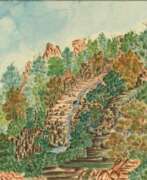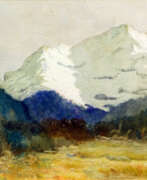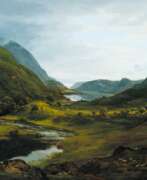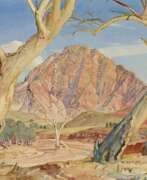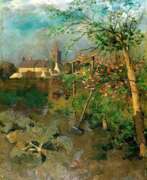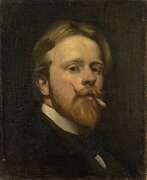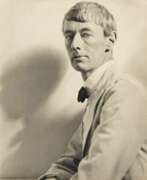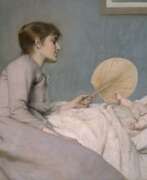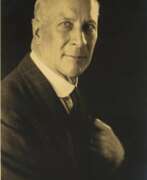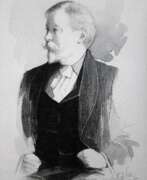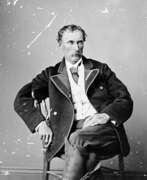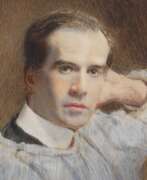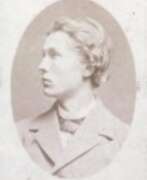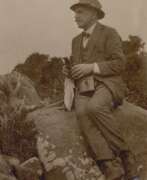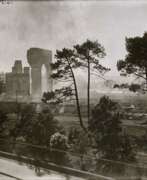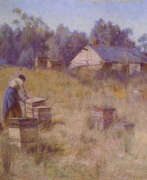Australia 19th century
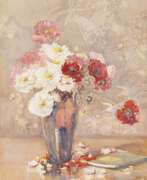

Gwen Barringer was a South Australian artist, known for her watercolours. Barringer was noted for watercolours of flowers and landscapes, to which she invested a fairyland-like glamour and remained immune to trends and changing fashions. She is represented in the State galleries of South Australia and Victoria, and the National Gallery, Canberra. Barringer studied at the South Australian School of Arts and Crafts under H. P. Gill, Archibald Collins and Hans Heysen. She was a council member of the South Australian Society of Arts for over 30 years, and was also well known as a teacher.
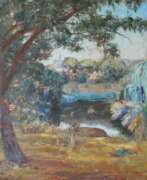

Ethel Barringer was a South Australian artist who excelled in various media, but was particularly known for her etchings. She was educated at the Advanced School for Girls under Miss Rees George, and was a student of Hans Heysen and Mary Packer Harris at the SA School of Arts and Crafts. She studied in London for several years and took courses in enamelling, jewellery designing, life work, and etching at the St John's Wood Art School and the Sir John Cass Technical School. On her return to Adelaide she set up a studio of her own in Flinders Street, but gave it up when she gained an appointment as assistant teacher at the School of Arts and Crafts on North Terrace.
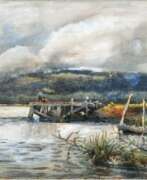

Arthur Merric Boyd was an Australian painter. He and his wife Emma Minnie (née à Beckett) established a lifestyle of being artists which many generations followed to create the popular image of the Boyd family. Boyd travelled and painted a good deal on the continent of Europe, and returned to Australia about the end of 1893, where he lived mostly in Sandringham and other suburbs of Melbourne for the rest of his life. He occasionally sent good work to the exhibitions of the Victorian Artists' Society, but never mixed much in the artistic life of his time.


Emma Minnie Boyd, born Emma Minnie Beckett, was an Australian artist. She exhibited publicly between 1874 and 1932 with the Victorian Society of Artists, the International Centenary Exhibition of 1888 (Melbourne), the Royal Academy of Arts (London) and in a joint exhibition with her husband at Como House in Melbourne in 1902.
Emma Minnie Boyd had a talent for watercolour landscapes, although she painted in both watercolour and oil, depicting interiors, figures, portraits, still lifes and floral studies. She is part of the Boyd artistic dynasty that began with Emma and her husband Arthur.


Louis Buvelot, born Abram-Louis Buvelot, was a Swiss landscape painter who lived 17 years in Brazil and following 5 years back in Switzerland stayed 23 years in Australia, where he influenced the Heidelberg School of painters. Buvelot is best known for his great contribution to Australian art. His works, mostly oil landscapes, are quite well regarded, but perhaps his impact was even greater as a tutor of several members of the Heidelberg School. His enthusiasm for plein air painting (that is, painting directly in the open air) was a key characteristic of those artists' work.


Charles Edward Conder, an Anglo-British painter, was a pivotal figure in the Australian art scene, known for his significant contributions to the Heidelberg School and the famous 9 x 5 Impressions Exhibition. Born in England in 1868, Conder's artistic journey began in earnest when he moved to Australia, where he immersed himself in the country's landscapes and developed a unique style that melded his natural instinct for color and design with the influences of his contemporaries and the environment.
Charles Edward Conder's time in Australia was marked by collaborative efforts with other notable artists, including Tom Roberts and Arthur Streeton, with whom he shared a studio and participated in the notable 9 x 5 Impressions Exhibition. His work during this period, characterized by a distinctive use of color and form, captured the essence of the Australian landscape while reflecting his personal artistic sensibilities.
In 1890, Charles Edward Conder's artistic pursuits took him to Europe, where he studied in Paris and mingled with prominent artists and writers of the day. His work continued to evolve, embracing the influences of Aestheticism and the Bohemian lifestyle he led. Despite his artistic success, Conder's life was marred by health issues, including the effects of syphilis, which he contracted early in his career. His later years were spent in a struggle with the disease, culminating in his death in a sanatorium in 1909.
Today, Conder's legacy is preserved in his contributions to Australian art and the influence he had on his peers and successors. His works continue to be celebrated for their beauty, emotional depth, and the unique perspective they provide on the landscapes and culture of Australia during his time.
For those interested in delving deeper into the life and works of Charles Edward Conder, his art remains a testament to his skill and vision, offering a window into the vibrant art scene of his era and the landscapes that inspired him.
If you're captivated by the unique blend of Australian landscapes and European artistry in Charles Edward Conder's work, or if you wish to discover more about the Heidelberg School's influence on art and culture, we invite you to sign up for updates. Stay informed about upcoming exhibitions, sales of Conder's works, and exclusive insights into the world of art collecting. Don't miss the opportunity to deepen your appreciation for one of the luminaries of Australian art.
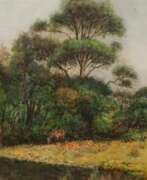

Alfred James Daplyn was an English-born Australian artist. Daplyn migrated to Melbourne in 1881, later becoming secretary of the New South Wales Art Society when he moved to Sydney. The Society's instructor in painting 1885-92, Daplyn influenced Charles Conder, Sydney Long and Julian Ashton.
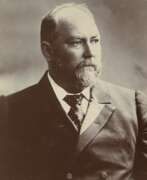

Sir John Forrest was an Australian naturalist, traveler and politician.
He worked as a surveyor and led several exploratory pioneering expeditions to western Australia. On his second voyage in 1870-1871, Forrest made an instrumental survey of the entire southwest coast of Australia from Perth to Adelaide. He later served as Australia's Minister for Defense, and as the first Premier of Western Australia (1890-1901), Forrest sponsored the construction of public works and negotiated the state's entry into the Commonwealth of Australia in 1901.
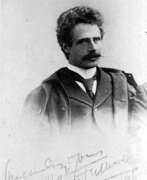

Albert Henry Fullwood was an Australian artist who made a significant contribution to art in Australia. He painted with Heidelberg School artists around Melbourne and moved to live and paint at their camp in Sirius Cove, Sydney. Fullwood was the Australian official war artist to the 5th Division in the World War I. Fullwood is represented in numerous galleries.
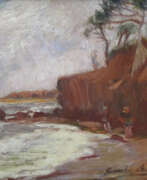

Gwendolyn Muriel Grant was an Australian artist, who worked mostly in portrait work in the Impressionist style. Many of her works have coastal or beach scenes, in addition to formal portraits and she was part of a vanguard of women exhibiting their work in Australia. Gwendolyn Grant was president of the Brisbane Lyceum Club in 1923. She wrote for the local newspapers on art and exhibited her works with the Victorian Artists Society and Society of Women Painters. She regularly entered the Archibald Prize competition. She exhibited her works in 15 solo exhibitions and 4 with her husband. She taught art at the Brisbane CTC until she was 75.
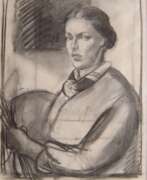

Norah Gurdon was an Australian artist. Gurdon attended the National Gallery School from 1901 to 1908, being taught by noted artists Frederick McCubbin and Bernard Hall. An accomplished landscape and still-life painter, Gurdon exhibited her works with the Victorian Artists Society while still a student. She established her artistic prowess early on by winning the major category for oil painting in the 1909 City of Prahran's Art Exhibition Prize.
Norah Gurdon was a regular and successful exhibitor of work, exhibiting with the Victorian Artists Society, Melbourne Society of Women Painters and Sculptors, and the Australian Art Association. In the 1920s she held many solo exhibitions at the Athenaeum Gallery, and later at the Women's Industrial Arts Society in Sydney, and the Royal Queensland Art Society in Brisbane.
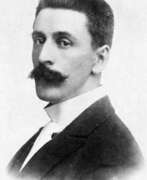

Lindsay Bernard Hall was an English-born Australian artist, teacher and art gallery director. He studied painting at the South Kensington School of Art, Antwerp and Munich, and worked for several years in London. He exhibited at the Royal Academy and was one of the original members of the New English Art Club. In 1891 he was appointed director of the National Gallery of Victoria and master of the School of Arts in Melbourne. Hall's paintings were usually interiors, nudes, or paintings of still life.


Ruth Miriam Hollick was an Australian portrait and fashion photographer who was one of Melbourne's leading Pictorialist photographers during the 1920s. There is evidence that Hollick was experimenting with photography in a home darkroom by 1907. The following year, she set herself up as a freelance photographer who toured rural areas of the state of Victoria, making portraits of families, especially children. She worked mostly outdoors in natural light with a field camera. By World War I, she had shifted into studio photography. It was in this period that Hollick developed a reputation for skillful use of both natural and studio lighting and for stylish compositions, often setting her subjects against plain backgrounds. She specialized in portraits of society figures and celebrities, as well as fashion photography for use in advertisements.
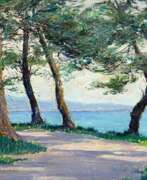

Constance Jenkins Macky was an Australian-born American artist and teacher. She was known for her portraits, landscape paintings, and still life paintings. She was a member of the San Francisco Art Association, and the California Society of Women Artists.
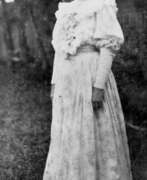

Frances Vida Lahey was a prominent artist in Queensland, Australia. She exhibited widely from 1902 until 1965. Vida Lahey was one of the first female artists in Queensland and Australia, who regarded themselves as professionals and who sought to earn a living from practising their art. Vida Lahey is represented in major Australian art galleries, including the National Gallery of Australia.
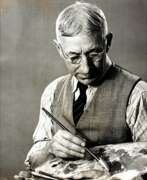

Sydney Long was an Australian artist. He was influenced by the Heidelberg School but after 1895 Long moved from the Heidelberg School's approach to the Australian landscape (a fusion of Victorian genre painting and a Barbizon-like plein air informal realism). In practice this resulted in a new school of Australian Paganism, reflected in the literature of the period as much as in the art. Long's greatest triumph in this style was The Spirit of the Plains (1897).
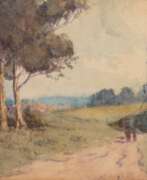

Matthew James MacNally was a well known Australian watercolourist during the first half of the twentieth century. Since his death there have been two major exhibitions of his work, one at John Martin's Art Gallery in Adelaide (1946) and a retrospective at the Benalla Art Gallery (1974).
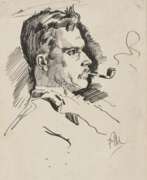

Francis Prout Mahony, also known as Frank Mahony was an Australian painter, watercolorist and illustrator. Mahony became known for his excellent drawings of horses. He worked for The Antipodean, The Sydney Mail and the Australian Town and Country Journal. In addition to his periodical work, he illustrated numerous books, including Where the Dead Men Lie, and Other Poems by Barcroft Boake, While the Billy Boils by Henry Lawson and Dot and the Kangaroo, a children's book by Ethel Pedley. His oils were moderately successful. He is best remembered as a capable painter of animals and is represented in the Sydney, Hobart and Wanganui, New Zealand galleries.


John Mather was a Scottish-Australian plein-air painter and etcher. As a painter, Mather was involved in the bohemian Artists' Camps of Sydney. In 1912 along with Frederick McCubbin, Max Meldrum, Walter Withers Mather formed the breakaway Australian Art Association. Three of Mather's own paintings, Autumn in the Fitzroy Gardens in oils, and Morning, Lake Omeo and Wintry Weather, Yarra Glen, both watercolours, were purchased by the National Gallery of Victoria.


Frederick McCubbin was a renowned Australian artist, a central figure in the Australian Impressionism movement, and a significant member of the Heidelberg School. Born in Melbourne in 1855, his early life was shaped by the colonial expansion of Australia, fostering a deep appreciation for the Australian landscape that would profoundly influence his art. McCubbin's art education was thorough, studying under notable artists at the National Gallery of Victoria Art School, where he later became a drawing master, educating future Australian artists.
Frederick McCubbin is celebrated for his unique depiction of the Australian bush, portraying the everyday life and struggles of settlers and bushmen with authenticity and sensitivity. His works like "Down on His Luck" and "The Pioneer" showcase this theme, highlighting the resilience and heroism of the Australian pioneers. These paintings are not just artworks; they are narratives that encapsulate the spirit of the nation, making Frederick McCubbin a pivotal figure in Australia's art history. His innovative approach to painting, characterized by an intimate connection with the landscape and a nuanced use of light and color, helped forge a distinct Australian art identity.
His paintings are housed in prestigious galleries across Australia, serving as testaments to his lasting impact on the nation's cultural heritage. Collectors and art enthusiasts revere McCubbin not only for his artistic prowess but also for his role in nurturing a unique Australian art narrative.
For those intrigued by Frederick McCubbin's legacy and wishing to stay informed about sales and auctions of his works, signing up for updates is a practical way to remain connected to the world of this eminent artist, ensuring you're alerted to new opportunities to engage with his enduring artistry.
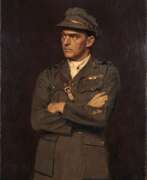

Duncan Max Meldrum was a Scottish-born Australian artist and art teacher, best known as the founder of Australian tonalism, a representational painting style that became popular in Melbourne during the interwar period. He also won fame for his portrait work, winning the prestigious Archibald Prize for portraiture in 1939 and 1940.
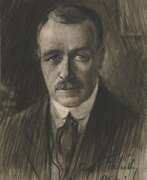

Benjamin Edwin Minns was an Australian artist, recognised as one of Australia's foremost watercolourists. Minns obtained his first job at the Illustrated Sydney News; Minns also drew for the Sydney Mail and regularly contributed to The Bulletin. From 1895 to 1915 Minns worked in England, contributing to St Paul's Magazine, Punch, The Strand Magazine, the Bystander and other publications as well as sending drawings to The Bulletin. Minns was a founder in 1924 and inaugural president (until 1937) of the Australian Watercolour Institute.
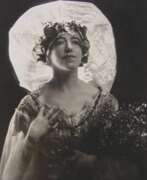

Hilda Rix Nicholas was an Australian artist. Born in the Victorian city of Ballarat, she studied under a leading Australian Impressionist, Frederick McCubbin, at the National Gallery of Victoria Art School from 1902 to 1905 and was an early member of the Melbourne Society of Women Painters and Sculptors. After travelling to Tangier in 1912, Rix held several successful exhibitions of her work, with one drawing, Grande marché, Tanger, purchased by the French government. She was one of the first Australians to paint post-impressionist landscapes, was made a member of the Société des Peintres Orientalistes Français, and had works hung in the Paris Salon in 1911 and 1913. Returning to Australia in 1918, Rix Nicholas once more took up professional painting, and held an exhibition of over a hundred works at Melbourne's Guild Hall. Many sold, including In Picardy, purchased by the National Gallery of Victoria. Following a period painting in rural locations in the early 1920s, Rix Nicholas returned to Europe. In 1926, Rix Nicholas returned to Australia. Though she continued to paint significant works including The Summer House and The Fair Musterer, Rix Nicholas, a staunch critic of modernism and disdainful of emerging major artists such as Russell Drysdale and William Dobell, grew out of step with trends in Australian art. Her pictures followed a conservative modern style, portraying an Australian pastoral ideal.
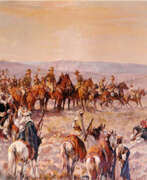

Harold Septimus Power, usually known as H. Septimus Power or H. S. Power, was a New Zealand-born Australian artist, who was an official war artist for Australia in World War I. He exhibited in 1899 with the Melbourne Art Club and soon after moved to Adelaide where he worked as an illustrator and political cartoonist. In 1904, he was commissioned by the trustees of the Art Gallery of South Australia to paint an animal scene. He was a member of the Royal Institute of Oil Painters and the Society of Animal Painters. He also exhibited at the Royal Academy of Arts. After war broke out in the summer of 1914, the Australian government appointed official war artists to depict the activities of the Australian Imperial Force in the European theater of war. Power was appointed in 1917 and was attached to the 1st Division, A.I.F. from September to December of that year and then again in August the following year. Official War Artist during the First World War and was renowned for his depiction of animals, in particular horses, on the field of battle.
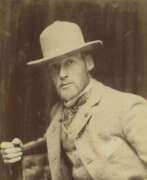

Thomas William Roberts was an influential British-born Australian artist, celebrated for his pivotal role in the Australian impressionism movement, commonly known as the Heidelberg School. His work profoundly shaped Australian art, capturing the nation's distinctive landscapes and the essence of its rural life.
Thomas Roberts' journey as an artist took him from Melbourne's art schools to the prestigious Royal Academy in London, where he immersed himself in European impressionism. Returning to Australia, he, along with contemporaries like Frederick McCubbin and Arthur Ernest Streeton, sought to depict Australia's unique light and landscape, pioneering a distinctive style that resonated with the Australian identity.
Among Thomas Roberts' notable contributions was the "9 by 5 Impression Exhibition," a groundbreaking showcase of impressionistic works painted on cigar box lids. This exhibition, marked by Roberts' leadership, played a crucial role in establishing the Heidelberg School's prominence in Australian art history.
Thomas Roberts' masterpieces, such as "Shearing the Rams" and "The Big Picture," are celebrated for their portrayal of Australian life and landscape. "Shearing the Rams," displayed in the National Gallery of Victoria, encapsulates the vitality of the Australian wool industry, while "The Big Picture," housed in Parliament House, Canberra, is a monumental depiction of Australia's parliamentary history.
In his later years, Thomas Roberts continued to advocate for Australian art and contributed significantly to its recognition and development. His legacy is enshrined in major Australian galleries, where his works continue to inspire art enthusiasts and professionals alike.
For collectors and art experts who cherish the rich history and vibrant culture encapsulated in Australian art, Thomas William Roberts' works offer a profound connection to the nation's artistic heritage. Sign up for updates to stay informed about new product sales and auction events featuring Roberts' influential art, and immerse yourself in the legacy of a pioneer who shaped Australian visual culture.
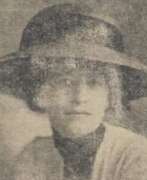

Florence Aline Rodway was an Australian artist best known for her portraits. Born in the Tasmanian city of Hobart, she was the second of six children to Leonard Rodway and Louisa Susan, née Phillips. She studied painting at the Hobart Technical College (now TasTAFE); after two years her work was sent to London, and she was awarded a three-year scholarship to study painting at the Royal Academy of Arts, London. She is best known for having painted portraits of notable figures in Australian history, including Dame Nellie Melba, William Bridges, J. F. Archibald and Henry Lawson.
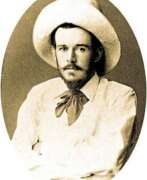

John Peter Russell was an Australian artist whose mastery in impressionism marked him as a significant figure in the art world. Born in 1858 in Sydney to a Scottish engineer and a Londoner, Russell's early life was shaped by his family's engineering business. However, his passion for art led him to pursue a career in painting, eventually moving to Europe to refine his skills. Russell's work is characterized by his innovative use of color and light, reflecting the impressionist style he adopted after settling in France.
Russell's association with other prominent artists of his time, including Vincent van Gogh, Claude Monet, and Henri Matisse, played a crucial role in his development as an artist. His friendship with van Gogh is particularly notable, with Russell creating one of the first portraits of the Dutch painter. Monet and Russell often worked together at Belle Île, influencing each other's approach to capturing the landscape's transient beauty. Matisse, too, credited Russell with introducing him to impressionism and the work of van Gogh, significantly impacting his artistic direction.
Despite his talent and connections, Russell's reluctance to sell his work and the subsequent destruction of a large portion of his paintings after his wife's death in 1907 meant that his contributions were not widely recognized during his lifetime. It wasn't until after his death in 1930 that Russell's work began to receive the recognition it deserved, with his paintings now featured in major Australian galleries and international exhibitions.
Russell's legacy is that of a pioneering impressionist whose work captures the vibrant interplay of light and color. His pieces, such as "In the Morning, Alpes Maritimes from Antibes" and "Rough Sea, Belle-Île," showcase his skill as a colorist and his ability to convey the mood and atmosphere of his surroundings. Through exhibitions and retrospectives, Russell's influence on the art world continues to be celebrated, highlighting his role as a bridge between Australian and European impressionism.
For those interested in the intersections of culture, art, and the impressionist movement, John Peter Russell's work offers a fascinating study. Collectors and experts in art and antiques are encouraged to explore his contributions further and to sign up for updates on new product sales and auction events related to Russell's work. This subscription is a valuable resource for staying informed about opportunities to engage with the legacy of this remarkable artist.
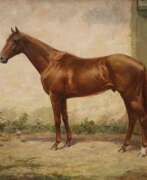

Martin Frank Stainforth was a British-born artist best known for his portraits of Thoroughbred racehorses he painted in England and while living in Australia and the United States. Born began his artistic career as a traditional artist doing religious portraits and wood engravings in the vein of the Italian Old Masters. The quality of his work brought invitations to exhibit at the Royal Academy as well as at venues in Berlin, Germany; Brussels, Belgium; and Paris, France. At the beginning of the 20th century, he began working as a magazine illustrator but a visit to North Queensland, Australia in 1908 led to his settling there and developing his skills as a painter of animals and especially equine portraiture.
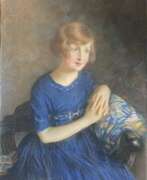

Janet Agnes Cumbrae Stewart was an Australian painter. She spent the 1920s and 1930s painting in Britain, France and Italy. Cumbrae Stewart's work is today held in the State collections of Victoria, New South Wales, South Australia and Queensland, the National Gallery of Australia, and several regional galleries including the Mornington Peninsula Regional Gallery and the Bendigo Regional Gallery. Although Cumbrae Stewart may not be viewed today as having pushed the boundaries of art, she certainly did push the boundaries of acceptability of women in art. She was one of the first Australian women artists to be considered equal to her male counterpart, and indeed greatly respected by them, which paved the way for future generations of women to be taken seriously in this field, and so rightly deserves to be recognised by history. For her handling of the medium too, she should be acknowledged. Few, if any, artists have come close to her ability with pastels in expressing the subtle modulations of tone and form of the human body, which despite being considered a feminine material, is notoriously difficult to master.
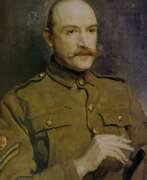

Arthur Ernest Streeton was an illustrious Australian artist, renowned for his contributions to the Heidelberg School of Australian impressionism. Streeton's artistic endeavor started at a young age with night classes at the National Gallery School in Melbourne. His encounters with like-minded artists such as Tom Roberts and Charles Conder at artists' camps near Melbourne were pivotal, culminating in the notable "9 by 5 Impression Exhibition."
Arthur Ernest Streeton's relocation to Sydney in 1890 marked a new chapter, where his work, imbued with Australian light and landscape, garnered acclaim. His paintings from this period, like "Fire's On" and the Hawkesbury River series, exemplify his mastery in capturing the essence of the Australian terrain. In 1897, Streeton ventured to London, though he maintained strong ties with Australia through his art and periodic returns. His service as an official war artist during World War I added a poignant chapter to his career.
Returning to Australia in 1923, Arthur Ernest Streeton's later years were marked by a continued passion for painting and a dedication to conservation and urban planning. His contributions to art were recognized with a knighthood in 1937. Today, his works are celebrated as quintessential representations of Australian art, residing in prestigious galleries and influencing new generations of artists.
For art collectors and experts, Streeton's oeuvre offers a window into the heart of Australian impressionism, reflecting the unique interplay of light, landscape, and national identity. His legacy continues to inspire and resonate within the art community.
For those interested in staying updated on Arthur Ernest Streeton's works and related auction events, signing up for updates is a prudent step to ensure you are informed about new sales and exhibition opportunities.
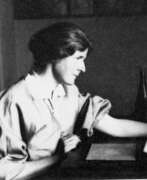

Jessie Constance Alicia Traill was an Australian printmaker. Trained by Frederick McCubbin at the National Gallery of Victoria Art School, and by painter and printmaker Frank Brangwyn in London, Traill worked in England and France in the period immediately preceding World War I. During the war she served in hospitals with the Voluntary Aid Detachment. Traill is best known for a series of prints created in the early 1930s depicting the construction of the Sydney Harbour Bridge. Critic and art historian Sasha Grishin describes her as "one of the great Australian artists of the 20th century".
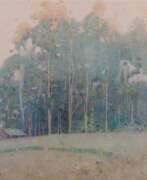

John William Tristram was an Australian artist who painted primarily in watercolour. He commonly signed his paintings "J. W. Tristram". Tristram's watercolours were typically soft and delicate. He was best known for his coastal scenes and rural landscapes which were often nocturnes or low light depictions of dawn or dusk. His works can be found in the collections of many Australian public galleries including: National Gallery of Australia, Art Gallery of New South Wales, National Gallery of Victoria, Art Gallery of South Australia and Queensland Art Gallery.
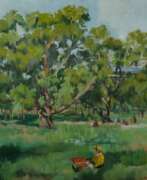

Janie Wilkinson Whyte was a painter, etcher, and wood-carver who studied at the National Gallery School from 1890–1895 and took lessons in etching from John Mather. Her etchings were published in The Lone Hand in 1907 as some of the earliest works in this field made by women. Whyte was an impressionist artist who painted portraits, figure studies, and landscapes, and was one of the first Melbourne women to paint dockyard scenes. She also painted interiors and flowers, and worked with oils, watercolours, and pastels. Her cityscapes contained charming observations of Melbourne life.


Walter Herbert Withers was an English-born Australian landscape artist and a member of the Heidelberg School of Australian impressionists. He settled down to a steady career of painting though not at first successful commercially. In 1897 he was awarded the first Wynne Prize at Sydney for his picture, The Storm, which was in the same year purchased for the National Gallery of New South Wales.
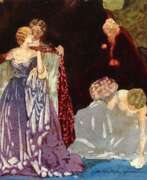

William Blamire Young, commonly known as Blamire Young, was an English/Australian artist who painted primarily in watercolour. In 1911 he held an exhibition at Melbourne of small pictures, some of which had similar qualities to the Japanese coloured wood-cuts of the eighteenth century. He was commissioned by the Postmaster-General of Australia, Charles Edward Frazer, to produce new designs for the first Commonwealth of Australia stamps. This design was first issued on 2 January 1913 and continued to be in use till 1935 concurrently with other stamps. In 1976 he was honoured on a postage stamp issued by Australia Post for his work as designer of the first Australian postage stamp.
